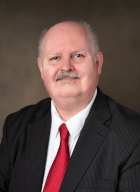South Korea Sees First Trade Deficit with China in 28 Years
FAR EAST: SOUTH KOREA REPORT

The economic relationship between China and the ROK has reached a turning point. According to statistics from the ROK, for the first time in 28 years, the ROK has a trade deficit with China. China has been the best customer of the export driven ROK economy, and this is causing concern in the ROK. At the same time, Chinese companies are intensifying their takeover of Korean companies, and in response to the escalation of the U.S.-China conflict, they have begun to pursue a strategy of using Korea as a foothold to capture the U.S. market.
A management official at South Korea’s Hyundai Motor’s joint venture plant in Chongqing, China, said that the passenger car assembly plant is idle and that negotiations are underway to sell it to a Chinese company. Hyundai Motor started operations in Chongqing in 2017, including an assembly plant with an annual production capacity of 300,000 units, but sales slumped due to the rise of Chinese automakers. At one point, the company occupied second place with a market share of nearly 10%, but recently it has fallen below 2% and slumped to 10th place.



